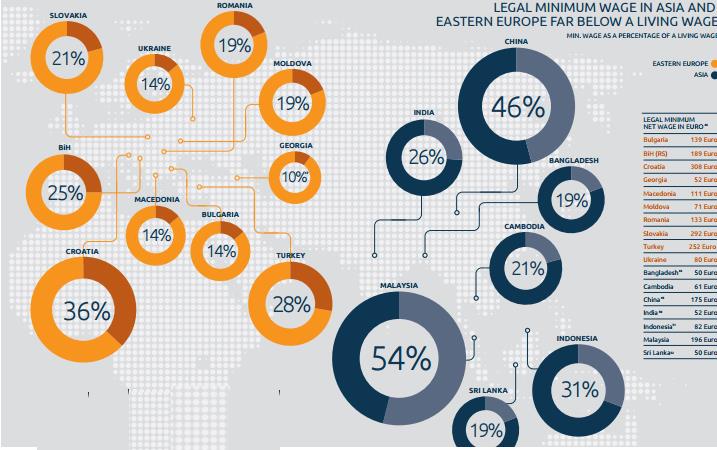Luxury clothing brands are not fairer than Primark
- Nicola Dario Hegg
- 19. Mai 2017
- 2 Min. Lesezeit
A t-shirt for 2.50 Euros, and jeans for nine Euros... In 2014 Primark opened another store in Berlin. Inside the new building Primark CEO received Prime Minister of Ireland and outside demonstrators appealed to the conscience of consumers. “Murder prices” is written on one of the demonstration shield.
But does it really depend purely on the price, whether a T-shirt is manufactured under fair conditions?
According to activists, who have been investigating in working conditions for years, the low-cost chains are not the only exploiter in the branch. The report “Poverty wages for garment workers in Eastern Europe and Turkey” issued by “Clean Clothes Campaign” found that luxury brands are optimizing their production and shift very often their production line from Western to Eastern Europe to keep the label “Made in Europe”. But how are the working conditions in factories (e.g. manufactories for Hugo Boss, Versace, Dolce & Gabbana) in Eastern Europe.
Salaries
The authors of the report compared living wages (cost of living) with legal minimum wages to find out if the legal minimum wage (if paid) creates a working poor class.
If living wages < legal minimum wages = No working poor situation
If living wages > legal minimum wages = Working poor situation
Furthermore they interviewed garment workers to find out more about the real situation. The results of the study indicate that the legal minimum wages are mostly a lot under the living wages (see graph), factories don’t pay the minimum wage, overtime is not paid or workers are forced to do overtime (e.g. working during the weekend) to receive the minimal salary.
Working hours
According to the report overtime occurs regulary. Workers stated in the interviews that their workweek was usually 42 hours in Croatia, 54 hours in Romania, 60 hours in Moldova. In Turkey standart working hours could even go up to 72 hours. In the majority of the researched countries overtime was usually between 4 hours and 20 hours per week.
Conclusion
A majority of garment workers in Eastern Europe factories face a working poor situation. The Garment workers are often overworked and the overtime is often not paid. Due to the high rate of unemployment workers have no alternatives and trade unions are not strong enough to improve the working conditions.
All the points mentioned above show the working conditions for garment workers in factories producing for luxury brands are not necessary better than in factories producing for cheap brands. One positive point: Higher security working environment for garment workers in Eastern Europe and Turkey vs. Asia
Since luxury brands are not under the same cost pressure as cheap brands, they would have the possibility to create fair production and influence the entire branch.
Sources:
Dooyeweerd, H. (1979). Roots of Western Culture: Pagan, Secular, and Christian Options.ISA. (2017). SA8000 Standart. Abgerufen von http://www.sa-intl.org/index.cfm?fuseaction=Page.ViewPage&PageID=937Luginbühl, C. (2014). Poverty wages for garment workers in Eastern Europe and Turkey. Abgerufen von https://cleanclothes.org/resources/publications/stitched-up-1Neuhaus, C. (2014). Luxusmarken sind nicht fairer als Primark. Der Tagesspiegel. Abgerufen von http://www.tagesspiegel.de/wirtschaft/prekaere-arbeitsbedingungen-luxusmarken-sind-nicht-fairer-als-primark/10157306.htmlWinston, A. (2016). Luxury Brands Can No Longer Ignore Sustainability. Harvard business review. Abgerufen von https://hbr.org/2016/02/luxury-brands-can-no-longer-ignore-sustainabilitychains




























Kommentare